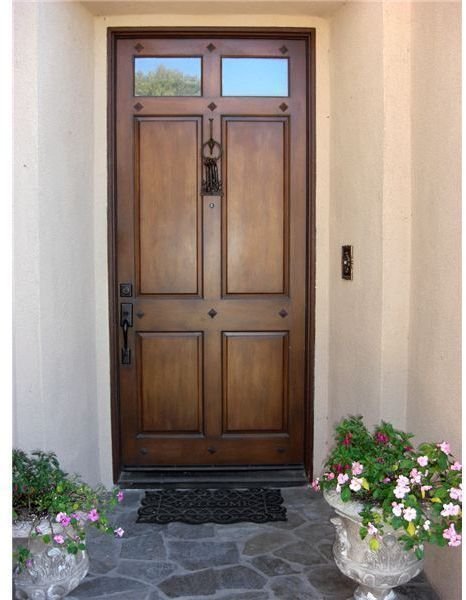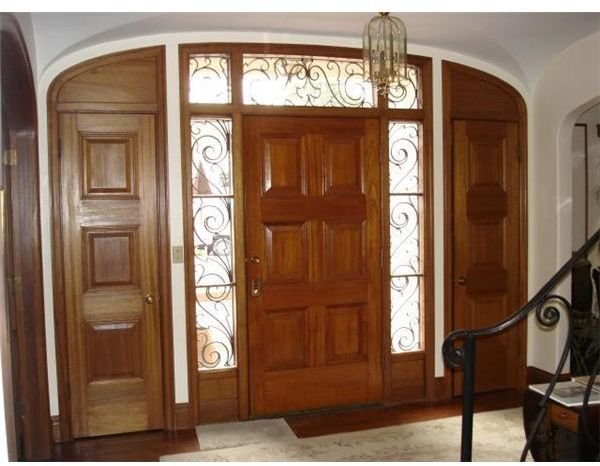Traditional External Front Doors
Door Basics
The original doors were simple methods for concealing cave fronts and for arranging safety from wild animals and rough weather.
Even today, the basic human requirement is security, privacy, and cover from harsh weather. However, door manufacturers today present multiple options of traditional external front doors, thermal curtains, and patio doors with blinds, due to which the door selection becomes involved. Former doors were made from stones, with hinges at the bottom and top. Current door quality depends upon the material used and the installation technique. Wood and fiberglass are generally expensive materials, while steel is comparatively cheaper.
Door Requirements
The requirements of doors are influenced basically by their application, the human aesthetic approach, and the economic factors.

The important factors that are normally considered for door selection are:
Style And Appearance
The doors at entrance are the initial observations that create an impact regarding the building.Often, the entrance door style is reflected in the other house doors.
Thermal Efficiency
Thermal effects of doors are considered while selecting door materials, and door styles. Modern doors have R value ratings that represent thermal efficiency. It is an evaluation of the material thermal resistance. Normally, it is ratio of temperature variation across the insulator and heat flux.
Ventilation
The real placing of windows and doors has a huge effect on the house ventilation. Poor design will increase the energy bill. Some doors include inherent openings for suitable ventilation even with the door in a closed position. This is feasible on the external doors.
Fire Safety
The door placing mitigates the door fire hazards. There are building regulations that require specific distances to be maintained to an exit. This is the distance required to be run when fire breaks out. Public buildings have doors and frames with specific fire ratings. Furthermore, these doors open outwards.
Illumination
The doors should be adequately illuminated to obtain maximum advantage of the natural light. Therefore, doors may have glass panels, or may be constructed totally from glass.
Strength
Closely linked to security is the door and frame strength. Expensive locks will not be effective on the external doors if the door panels are not correspondingly strong.
Door Materials
A large variety of door materials are available for selection. The choice will depend upon the type of building where the door is to be

fitted, internal or external use, weather conditions, and above all, human choice. The most common materials that are used are wood, glass, and fiberglass. The main distinction between the door materials is aesthetic. Some people may desire real wood, compared to the simulated grains on wood. However, with the advancement in technology, grains on fiberglass can be simulated to match real wood. A wood door is generally prepared from thin plywood, or laminate materials on either side. The panels are usually made of thick plywood and wooden pieces. This is a useful method for preparation of wood doors. The exposure of wooden doors to the weather effects may deteriorate the materials. It will require frequent maintenance. The plywood or laminates cannot be sanded, or only seldom sanding may only be possible. The top layers will absorb moisture and damage the inner material. The other kind of wood door is made from pure wood. Wood doors are heavy, secure, durable, and beautiful. Sanding and refinishing of wood doors is possible that will improve their appearance and durability. However, wood doors are extremely expensive.
